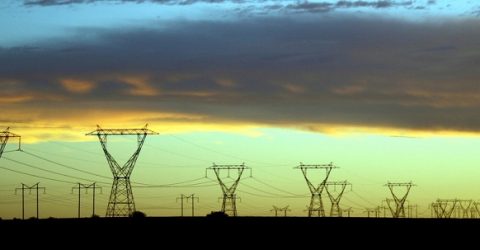A user’s guide to Powerline adaptors

Apart from telling people to Turn It Off And Turn It On Again, tech support teams are notorious for asking whether a computer is hardwired to the broadband router.
It’s often the first question you’ll be asked when phoning your broadband company’s customer helpline – they’re usually too polite to suggest TIOATIOA straight away.
If your desktop or laptop sits next to the broadband router in your home or office, it’s probably already hardwired with an Ethernet cable.
However, most devices rely on wireless connectivity, especially if they’re in a different room to the router.
Increasing the distance from router to device lowers data speeds, heightening interference from other wireless devices and solid objects like concrete floors or wooden furniture.
Yet many people assume there’s no alternative to either wireless connections or Ethernet cabling.
As it happens, there is.
Take the power back
Powerline adaptors are bulky white boxes, resembling lamp timers.
They use the electricity circuits in our homes (which link every plug socket into a single loop) to distribute broadband data.
Electrical circuits are capable of carrying a variety of separate frequencies at once, so broadband data packets won’t interfere with electricity distribution.
A master adaptor connects to the broadband router with an Ethernet cable, before being plugged into a standard three-pin wall socket.
Inserting another Powerline adaptor into any other plug socket on the same circuit allows data to flow seamlessly between master and satellite adaptors.
If the satellite unit is hardwired to a computer, games console or smart TV, broadband will be piped to that device without any wireless transference.
It’s not as quick as directly tethering a device to the home hub, but it’s much faster (and more stable) than WiFi.
Modern Powerline adaptors support gigabit transfer speeds – in excess of anything broadband companies are presently able to deliver – making them completely future-proof.
Plug and play
By establishing a hardwired connection, Powerline adaptors deliver several advantages over WiFi:
- Device location isn’t an issue. Rather than having to position devices to boost their signal, any plug socket becomes a source of broadband. That’s ideal in larger properties
- Speeds are consistent. Unlike the fluctuations evidenced in WiFi connections, data transfers are steady – Powerline adaptors are ideal for mobile gaming or streaming
- Security is improved. With no information being sent wirelessly, it’s far more difficult for third parties to eavesdrop or steal bandwidth for their own devices
- Unreliable devices remain stable. Computers sometimes struggle to maintain wireless connections, whereas using a Powerline adaptor effectively eliminates dropouts
- They can act as range extenders. Some Powerline adaptors pump out wireless data as well, turning them into mesh WiFi extenders
- Technical support is simplified. You don’t have to run Ethernet cables through the house before reporting a broadband fault. Though you may still be asked to TIOATIOA…






